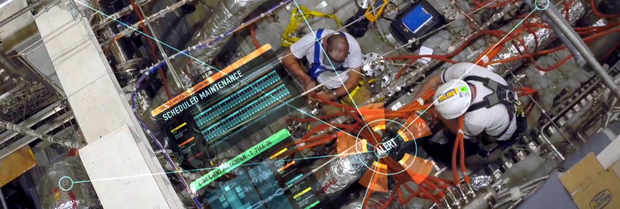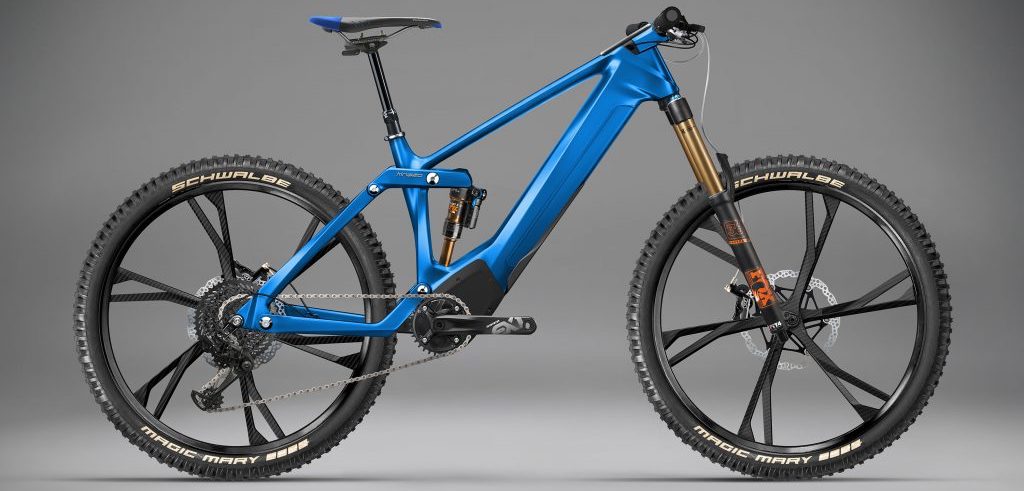
“We call it intelligent dispatching.”
- Scott Berg,
chief executive of GE’s ServiceMax
1. THE FIXER
Don’t be too surprised if calling for maintenance gets a lot more efficient soon. Starting this year, artificial intelligence could make service dispatch decisions for power companies much easier to make. Software engineers at ServiceMax, a software company acquired by GE in 2016, are developing AI algorithms designed to help customers better manage repair crews.
The system will use data from real-life repairs to pick the right repair person by scanning each individual’s work history and predicting which technician would be the quickest and most reliable at a particular task like, say, installing a cable in someone's home or fixing a wind turbine. “We call it intelligent dispatching,” Scott Berg, chief executive of GE's ServiceMax, said. “We’re running a proof of concept now.”
Learn more about how AI-driven suggestions will improve the way we fix things.
2. BESPOKE BIKES
Have you ever ridden a bike that was custom-tailored to your body? Have you ever ridden one that was 3D-printed? Enter Kinazo’s E1, the first 3D-printed electric bicycle, made in partnership with Volkswagen. Using a powerful printer for metals, the E1 e-bike is customizable to each customer’s personal needs, from arm and leg length to weight and balance. The bicycle weighs 44 pounds and retails for $23,500.
What kind of 3D printer can print an entire bike frame? Kinazo's Patrick Paul and his team used the largest commercial 3D printer for metals on the market — the Concept Laser X Line 2000R 3D printer. The machine has a build area of roughly 2.5 feet by 1.5 feet by 1.5 feet, enough space to print the largest piece of the frame as one single part.
Start saving up for your own custom 3D-printed e-bike now — and learn more about the revolutionary vehicle here.
3. 2018 PREDICTIONS

From cancer-fighting cells to “edge” technologies, 2017 was a year of breakthroughs in science and technology. Wonder what tech innovations are in store for 2018? Experts from GE Ventures weighed in with their projections.
According to their predictions, we are moving toward new models and markets for renewable energy, more personalized and accurate health care and decentralized manufacturing facilities — all thanks to technological advancements gaining steam.
Learn more about GE’s vision for 2018 here.
COOLEST THINGS ON EARTH?
- Brain cancer bullseye
Scientists at the University of Leeds in the U.K. have figured out how to breach the blood brain barrier — already a feat — to fight brain tumors by infecting them with a virus and making them visible for the body's immune system. The approach could lead to new therapies for treating more aggressive brain cancers.
- Robo-toddler
A robot programmed by engineers at the University of California, Berkeley can perform “intelligent planning of highly flexible skills in complex real-world situations” thanks to assessing its surroundings like a toddler. The technology could help self-driving cars anticipate future events on the road and produce more intelligent robotic assistants for homes.
- Space crops on Earth
“The world has to produce 60% to 80% more food by 2050 to feed its 9 billion people,” and researchers at the University of Queensland in Australia are helping us get there with a new “speed breeding” process for crops. The process can double to triple the speed of plant growth and allow scientists to generate hardier crops faster.
Read more about these, plus crawling plastic and bacterial submarines, here.






